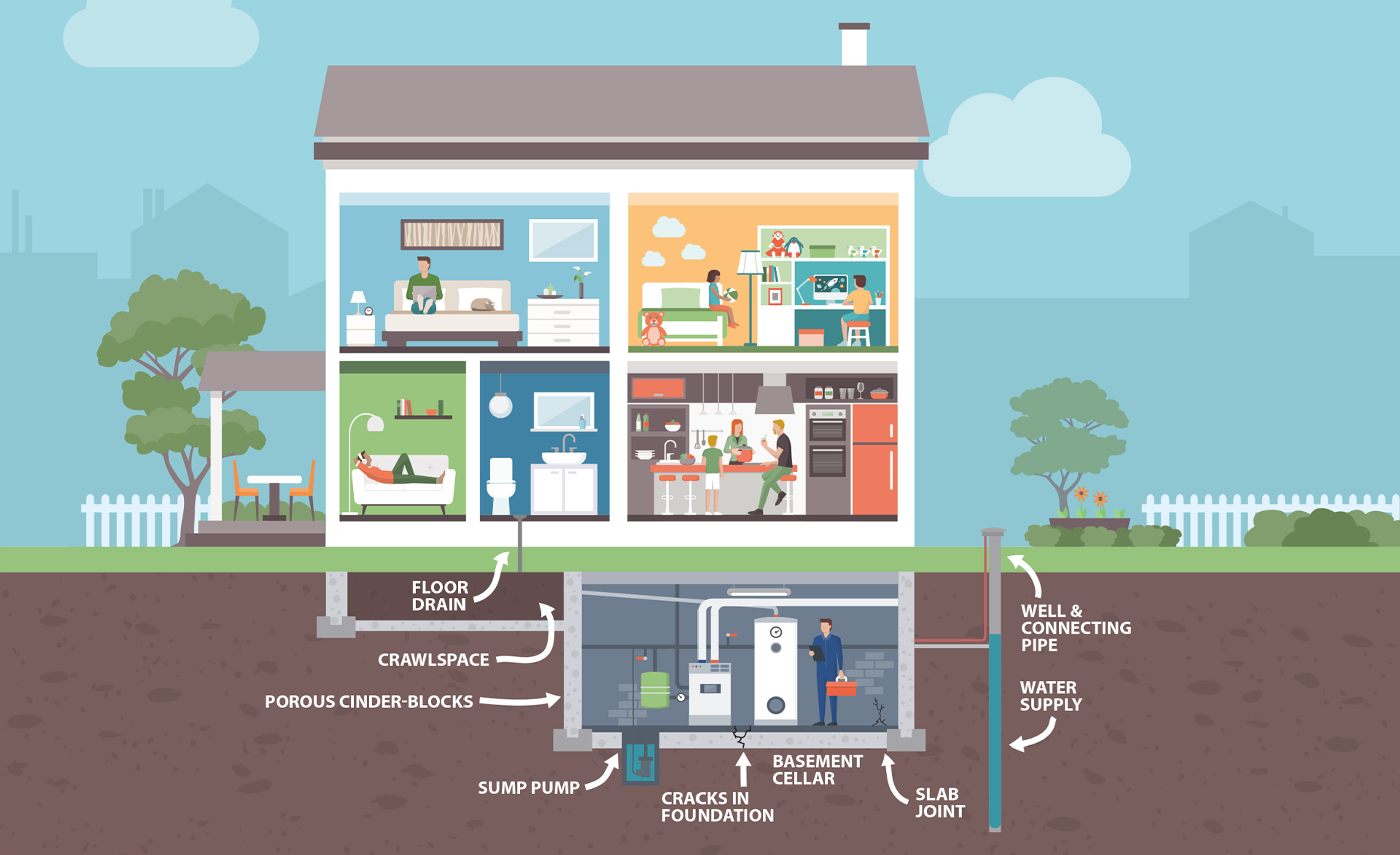January is Radon Action Month
Prioritize your family’s health and safety by an often-overlooked hazard: radon gas. This odorless, colorless gas is the number one cause of lung cancer in people who don't smoke, and the second leading cause of lung cancer after smoking.
Globally, residential radon exposure alone was estimated to have caused 84,000 deaths by lung cancer, according to WHO. The Environmental Protection Agency estimates that 21,000 people die in the United States from radon a year.
Radon is the Second Leading Cause of Lung Cancer
Long-term exposure to high radon levels poses serious health risks. By testing and addressing radon levels early, you protect your family from the dangers of prolonged exposure. Mitigation systems can effectively reduce radon levels, ensuring your home is a safe and healthy space.
Testing your home for radon is simple, affordable, and life-saving. Our radon test kits are widely available, or you can hire a certified radon professional. Regardless, January is the ideal time to act since homes are more sealed during colder months, providing more accurate results.
Why Test for Radon This Month?
Radon is a radioactive gas that forms when the Uranium in natural stone decays. The gas decays into radon progeny which are radioactive metal atoms that get caught in our respiratory tracts during inhalation. Radiation emitted from the radon progeny causes lung cancer by damaging the cells in our respiratory tracts and lungs.
Radon gas is odorless and a test is the only way to detect the gas. The amount of radon in indoor air will vary depending on structural deficiencies, ventilation, and is influenced by the weather outside. Due to these factors, it is recommended that all dwellings, schools, and workplaces be tested for radon gas.
World Health Organization (WHO) states it is proven that radon, a Group 1 carcinogen, can cause lung cancer and Lung cancer kills more people than breast, pancreatic, colorectal, and prostate cancer COMBINED. The Environmental Protection Agency estimates that 21,000 people die from radon a year. It constitutes the second leading cause of lung cancer in the U.S. and in 2005 the Surgeon General of the United States issued a national health advisory.
Radon gas is odorless and a test is the only way to detect the gas. The amount of radon in indoor air will vary depending on structural deficiencies, ventilation, and is influenced by the weather outside. Due to these factors, it is recommended that all dwellings, schools, and workplaces be tested for radon gas.

There are two main different types of radon testing: Long Term & Short Term tests.
Short Term Test Kits
- Our Rapidos detector is for shorter measurements of at least 10 days and 90 days at most. While not a traditional short-term test, our device combines the need for a quick test with the proven accuracy of alpha track technology. Since it is not susceptible to the vulnerabilities that typically hinder a short-term test, you can easily see your radon level while leaving worry behind.
- Our QuickScreen radon test kit is an activated charcoal tester meant for 48 hours to 96 hour screening. Mean to be deployed under closed home conditions. Inexpensive and perfect for preliminary testing.
Long Term Test Kits
- The Radtrak³ is a long-term test that will monitor between 90 days and 1 full year. The guidelines put in place by the EPA and Health Canada are both based on a year-long exposure to radon. This extremely accurate test will take into account all of the daily fluctuations in radon and provide an average concentration.
Need More Information on Radon Testing?
Download our Home Radon Guide today for detailed information on how measuring for radon in your home with a radon test kit works.


